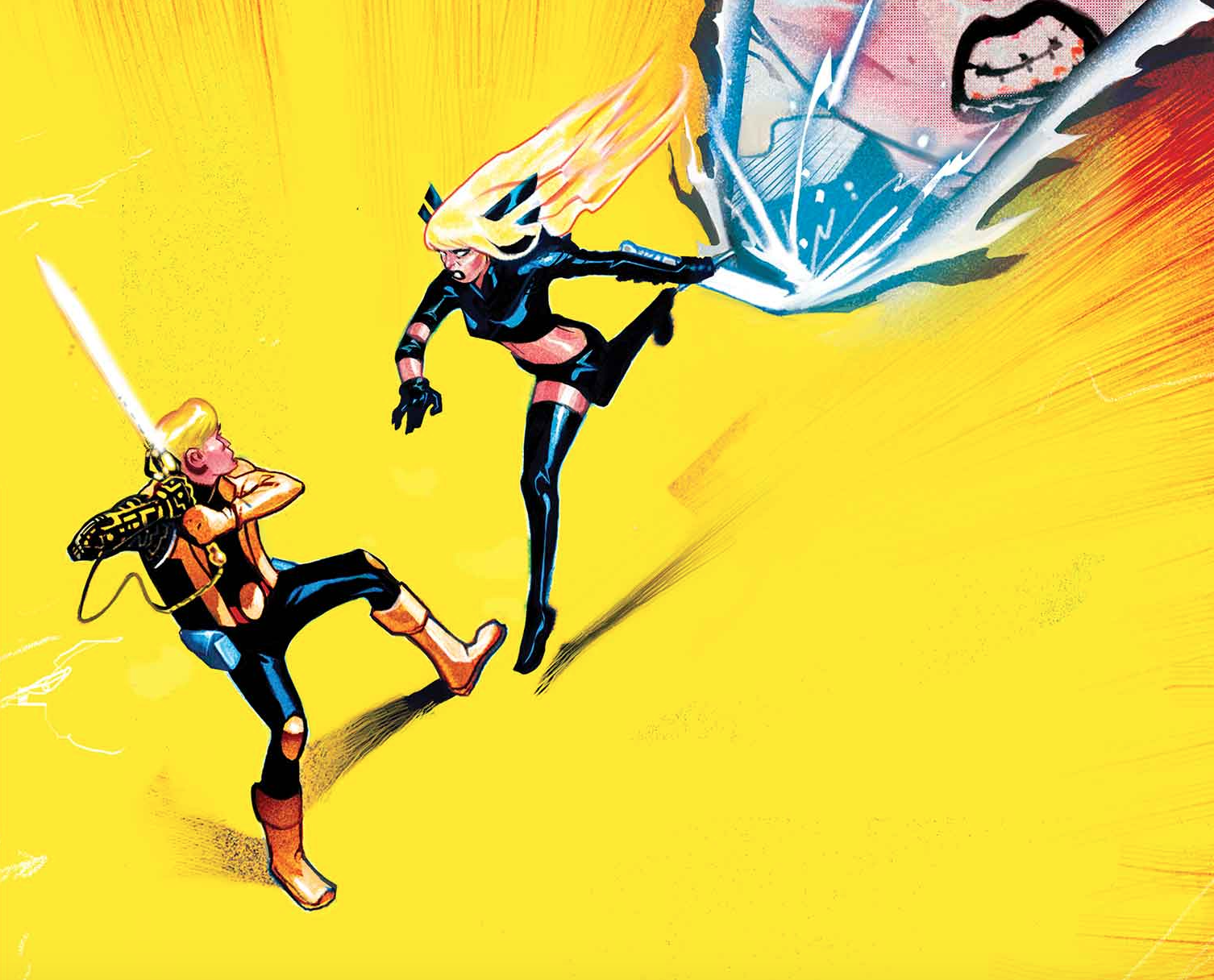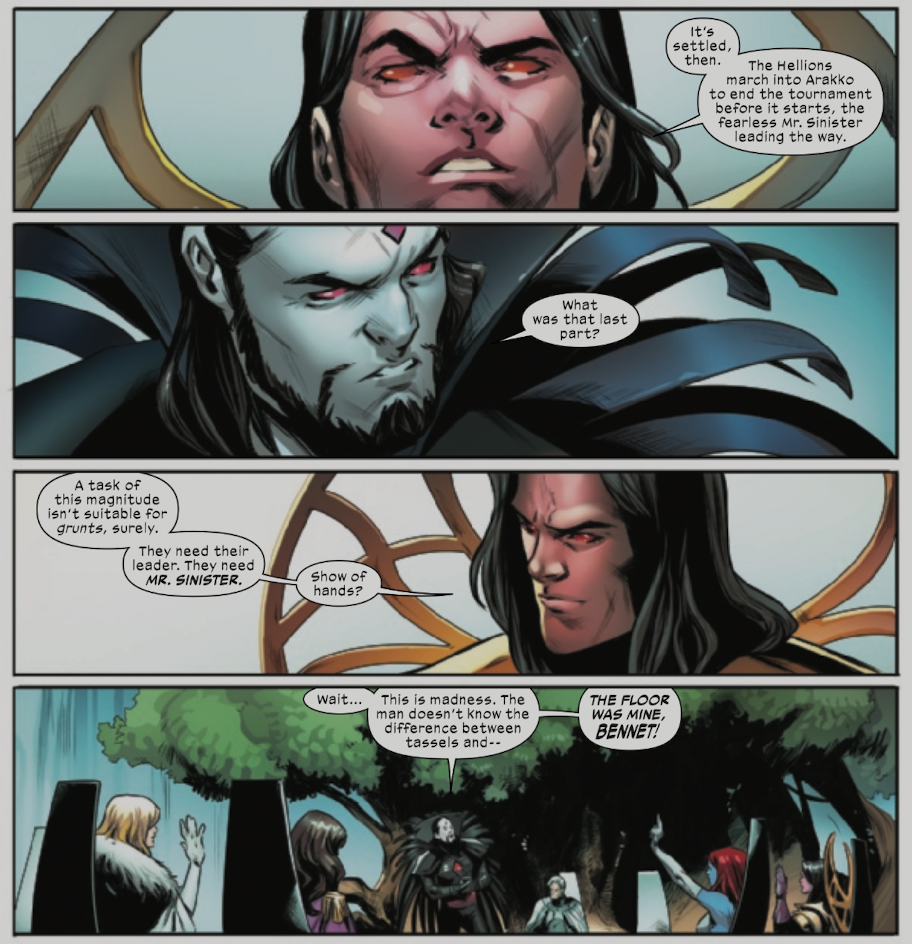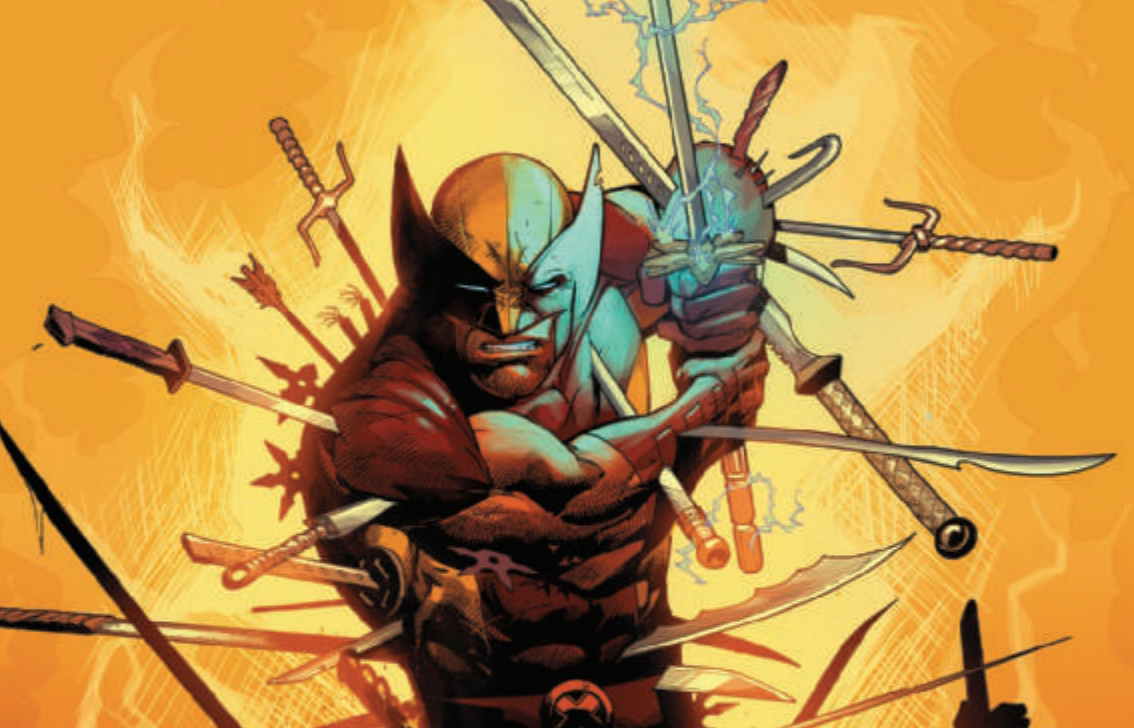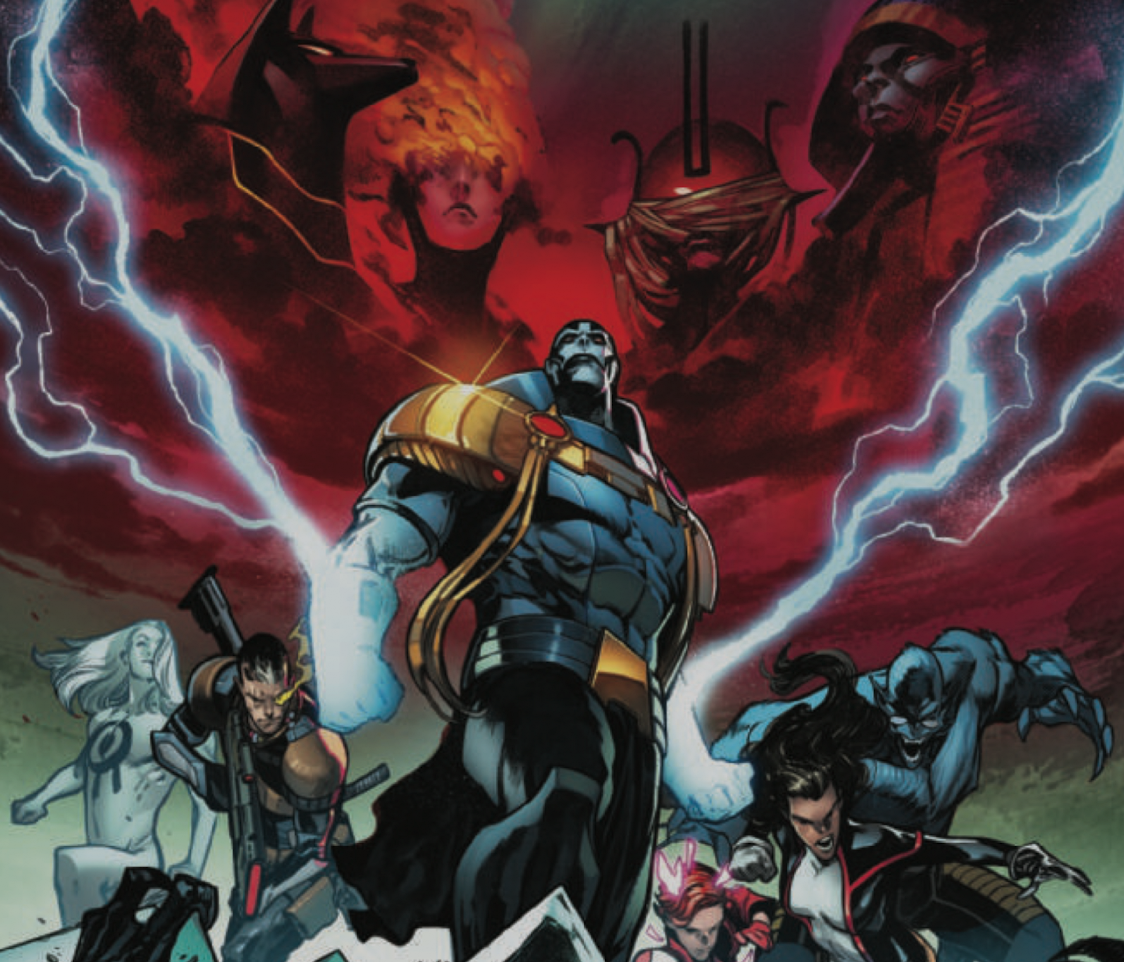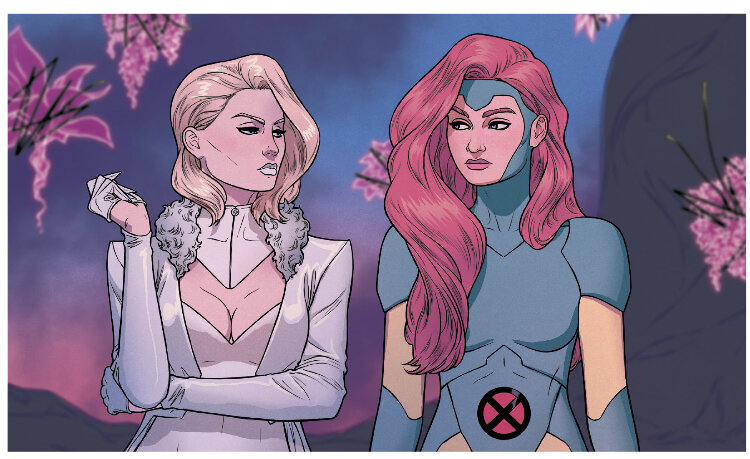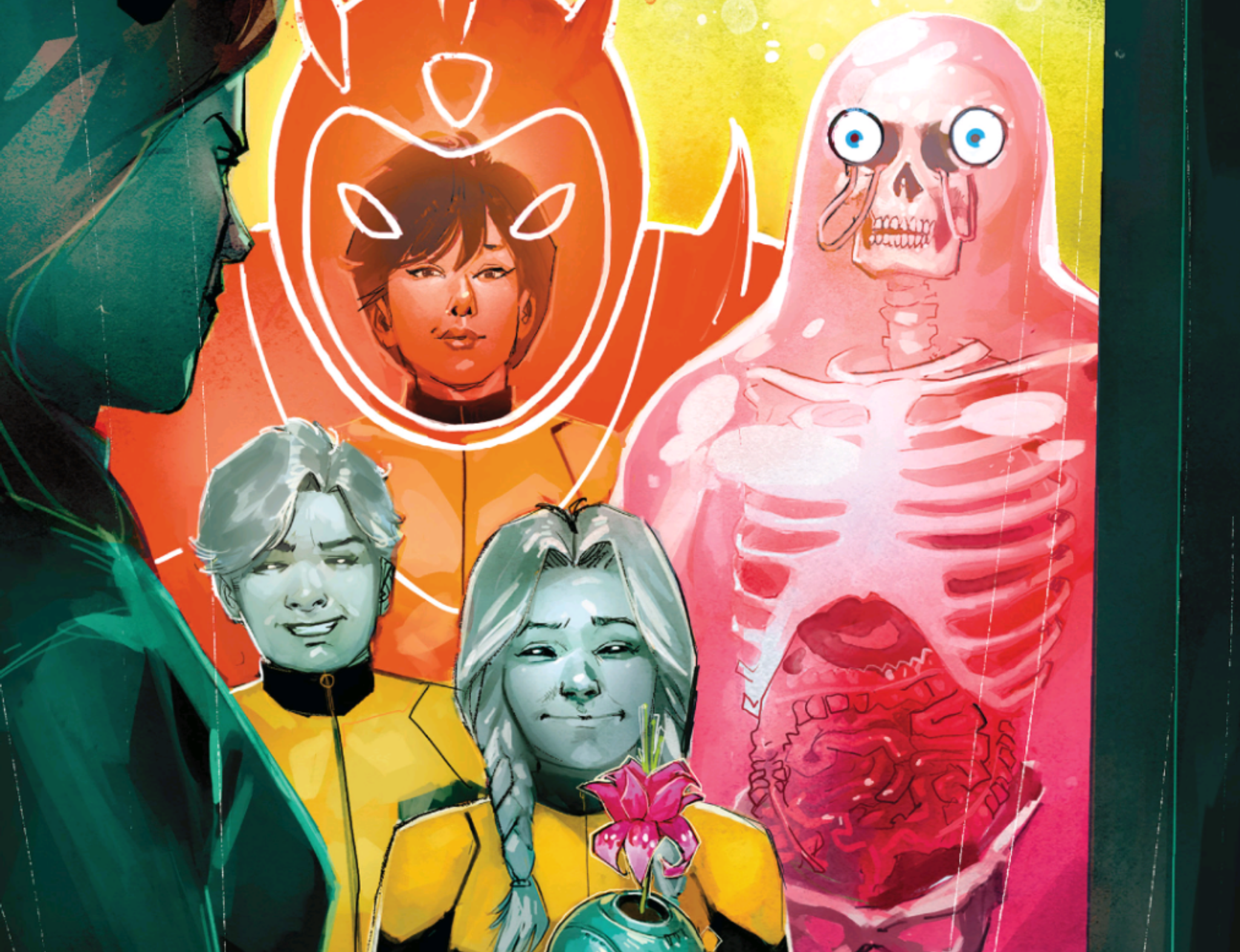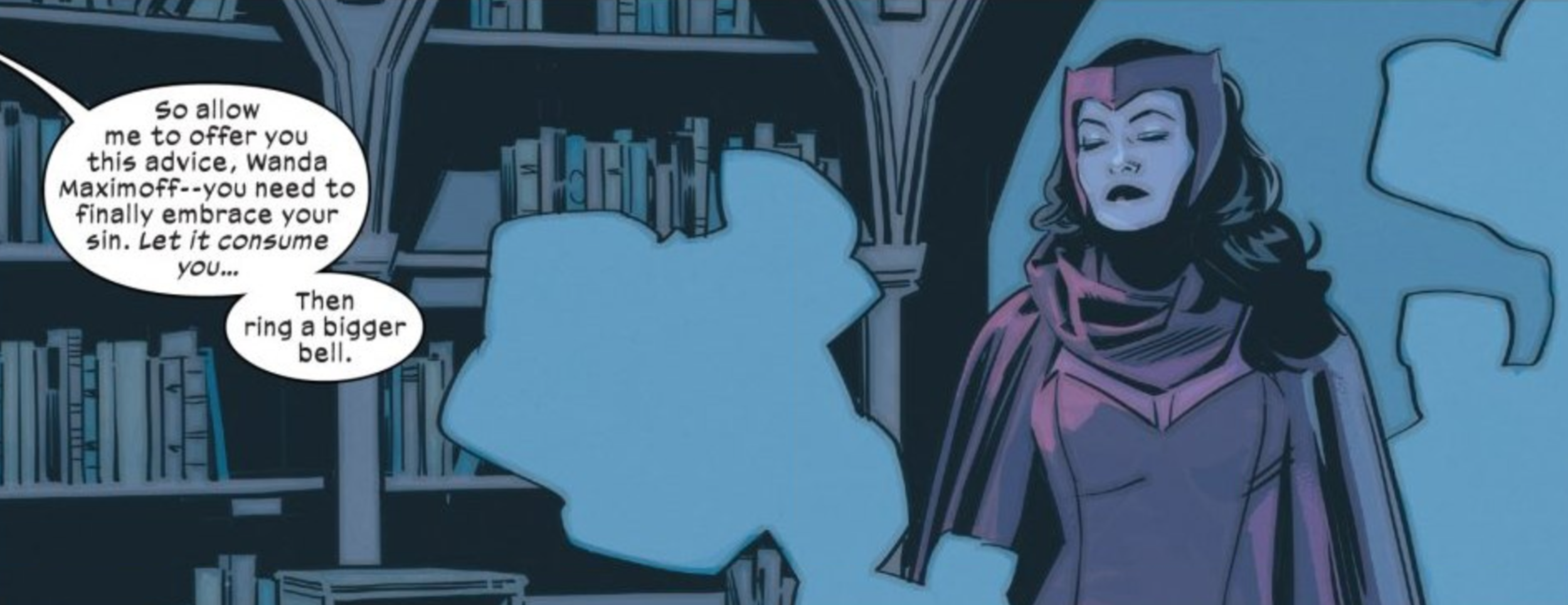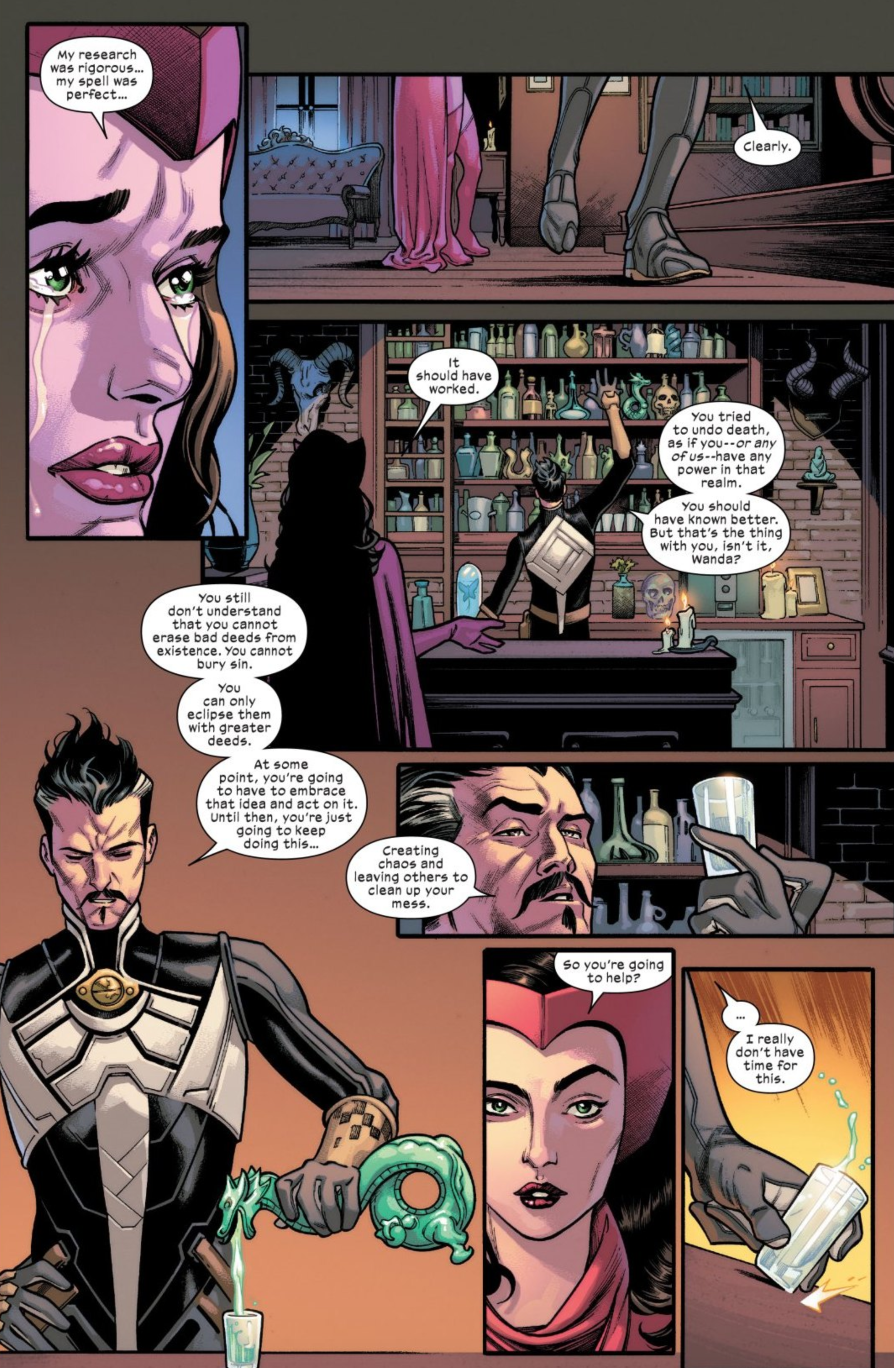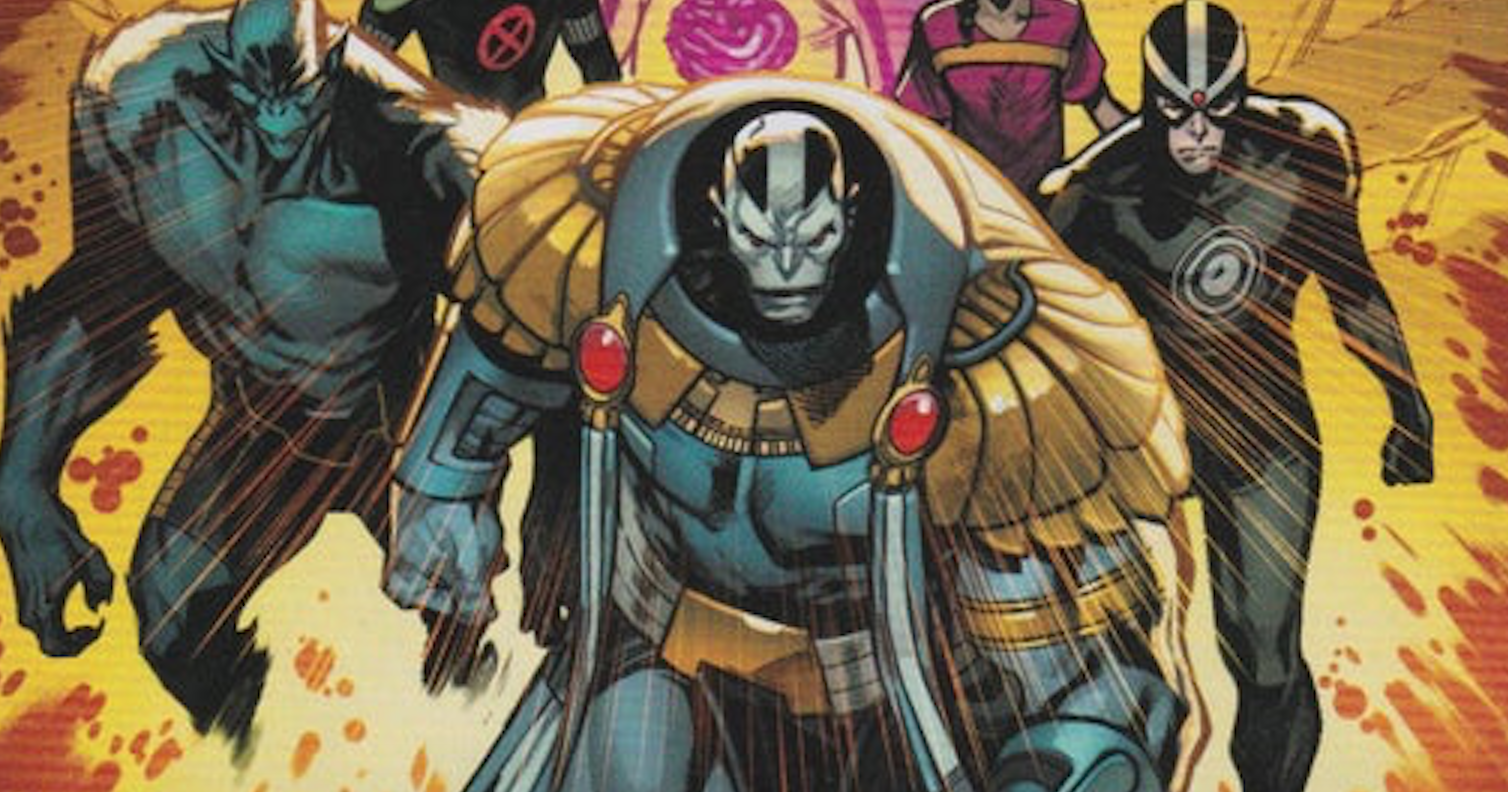For Your Life
“X of Swords: Chapter 14”
Marauders #15
Written by Gerry Duggan and Benjamin Percy
Art by Stefano Caselli
Color art by Edgar Delgado
“X of Swords: Chapter 15”
Excalibur #14
Written by Tini Howard
Art by Phil Noto
“X of Swords: Chapter 16”
Wolverine #7
Written by Benjamin Percy and Gerry Duggan
Art by Joshua Cassara
Color art by Guru-eFX
And now the story gets a little weird! But of course, “weird” is a human word…
• Marauders picks up on last week’s cliffhanger in the most jarring way possible, zooming ahead to the aftermath of Wolverine murdering Saturnyne – the inevitable conquest of Krakoa and the rest of Earth by the forces of Arakko and Amenth. But of course Saturnyne is seemingly omnipotent in her realm, and so she’s only just messing with Wolverine and showing him the actual stakes of the situation. This all supports the notion that it’s in Saturnyne’s interest to defeat the Arakkii and flush the influence of Amenth out of Otherworld lest they inevitably conquer the rest of her domain, but Saturnyne’s actions over the course of three issues complicate matters further by capriciously rigging the contests against the Krakoan swordbearers in increasingly absurd ways. She’s playing a game, but it’s hard to tell exactly what it is.
• Marauders #15 continues on from last week’s issue in further developing the characters from Arakko at the banquet before the contest. The White Sword’s tension with the family of Apocalypse and Genesis is highlighted by his utter disgust for War attempting to poison her opponents at the parley, while Redroot and Death ponder the ways living in a far less horrific world has made the X-Men “weak and soft.” It’s remarkable how familiar these characters and their milieu have become over the past few weeks – it’s all so rich that it would be a shame to see some of them go at the end of this story.
• We get our first glimpse of Death’s mutant power as he murders a servant with a glare at the banquet. This scene is handled very well by Stefano Caselli, who paces it very nicely and conveys how effortless and meaningless this gesture is for Death. It’s interesting that this power is only a minor variation on that of Gorgon, who also hides his eyes to hold back his own version of a death gaze. (And of course this carries over to Cyclops, though he’s not in this story.)
• Isca the Unbeaten is further developed in both Marauders and Excalibur, in both cases suggesting that she’s a decent person who feels inclined to spare her opponents the inevitability of her victory. It’s increasingly obvious Isca is going to be hanging around the X-Men for a while after this, and I welcome it. She has so much potential, and the concept and design of her is so strong.
• Excalibur #14 begins the contest phase of the storyline and immediately upends all expectations by giving us an abrupt anticlimax in the duel of Betsy Braddock and Isca and then a forced marriage rather than a battle. Betsy’s apparent death in her fight with Isca is strange and abstract, and also unrelated to any power we know Isca to possess besides that she wins any battle she’s in, so it seems very likely whatever happened to her is the intervention of Saturnyne’s magic or perhaps her brother Jamie’s reality-warping power.
• The forced marriage of Cypher and Bei the Blood Moon is a wild curveball, but makes sense if Saturnyne’s true goal is to weed out the Amenthi influence on the Arakkii and get the Krakoans and Arrakkii on the same page – i.e., purging Amenth from Otherworld. This sequence is a lot of fun, and I love that Bei is able to “speak” in a way that is intuitively comprehensible to everyone else but is by technicality indecipherable to him as a result of his power. So of course he’s fascinated by Bei, and though Bei’s thoughts on the matter are opaque she seems pretty enthusiastic about marrying – and violently protecting – this cute little golden-hearted dork. But still, as amusing as it is for this tall warrior woman to embrace the notion of marrying him, it’s hard to grasp why given the limited information we have about her life.
• The Wolverine issue pushes the absurdity of Saturnyne’s competition to another level, first by making Magik’s battle against the monstrous Pogg Ur-Pogg an arm wrestling match she cannot possibly win, and then by having Wolverine kill Summoner in the surreal realm of Blightspoke and having the point go to Arakko because they were told it was a fight to the death and Summoner was the one to die. Then Wolverine is roped into another duel as a result of the agreement he made with Solem off-panel earlier in the story, and when Wolverine defeats War in battle, the point also goes to Arakko. Saturnyne is plainly rigging the contest against Krakoa… but why exactly? It makes sense for her to want to mess with Wolverine and Betsy specifically, but what is she actually up to? I suppose we’ll get that reveal next week.













